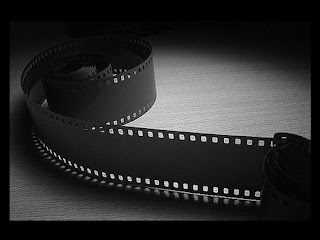 The International Organization for Standardization or "ISO" defines both an arithmetic scale and logarithmic scale for measuring color-negative film speed. Although, in digital camera systems there is an arbitrary relationship between exposure and sensor data values which can be achieved by setting the signal gain of the sensor. So what does that mean for you? Well, ISO is the measurement of the speed of film or how sensitive it is to light. A low ISO film is not very sensitive to light and the higher the ISO rating the more sensitive to light the film is but there is a trade off. The higher you go with the ISO rating the larger the film grain which means that more grain will be seen in the final product. When using a film camera, it is typical to shoot with a low ISO film (ISO 100 or ISO 200) for photography in normal daylight or for portraiture in a properly lit studio (due to the lack of visible grain in the finished product). ISO 400 film is typically used in lower light situations, such as, well lit indoor pictures. ISO 800 and ISO 1600 films are available for photography in very low light situations.
The International Organization for Standardization or "ISO" defines both an arithmetic scale and logarithmic scale for measuring color-negative film speed. Although, in digital camera systems there is an arbitrary relationship between exposure and sensor data values which can be achieved by setting the signal gain of the sensor. So what does that mean for you? Well, ISO is the measurement of the speed of film or how sensitive it is to light. A low ISO film is not very sensitive to light and the higher the ISO rating the more sensitive to light the film is but there is a trade off. The higher you go with the ISO rating the larger the film grain which means that more grain will be seen in the final product. When using a film camera, it is typical to shoot with a low ISO film (ISO 100 or ISO 200) for photography in normal daylight or for portraiture in a properly lit studio (due to the lack of visible grain in the finished product). ISO 400 film is typically used in lower light situations, such as, well lit indoor pictures. ISO 800 and ISO 1600 films are available for photography in very low light situations."Here's the secret that governs film speed: Doubling the ISO number of the film doubles its sensitivity to light. So ISO 200 film needs half the light to take the same picture as ISO 100 film. ISO 400 film needs a quarter of the light that ISO 100 needs. In other words, you could capture a low-light scene with a shutter speed of 1/15 second with ISO 100 film, or 1/60 second with ISO 400. That's an incredibly powerful capability that means the difference between getting a blurry mess and a sharp photo." ~ Dave Johnson
Who cares, right? ... I mean we are dealing with a digital camera world. You can't put film in a DSLR! No, but we are able to adjust the ISO of our digital cameras. Which means that by controlling the ISO adjustment on our digital camera we are mimicking loading different speed film into our cameras.
My digital camera shoots at ISO 3200 so I will just set it to that and shoot away. Well, that statement is not necessarily right. There is a down side to shooting at high ISO settings on a digital camera. The big one is that the higher you go with the ISO setting the more "noise" will be visible on the picture. You should always shoot at the lowest possible ISO setting at all times. In most normal conditions, stick with the cameras lowest ISO setting, since that will provide you with a picture with the least amount of digital noise. But when you notice the camera recommending a very low shutter speed (less than about 1/30 of a second for handheld shots) it is time to raise the ISO. Just remember that when you are done shooting at the higher ISO speed to lower it back down so your camera is ready for the next time you use it. To reiterate, do not be afraid to use a higher ISO setting just remember that the higher you go the more noise you are going to see on the picture.
No comments:
Post a Comment